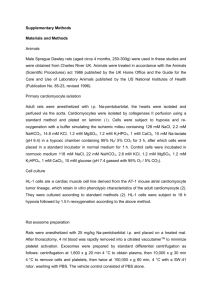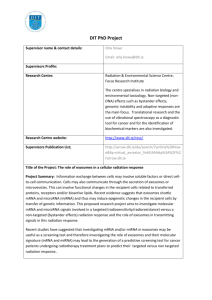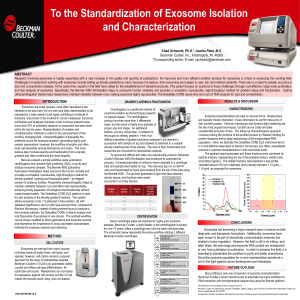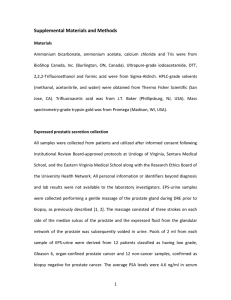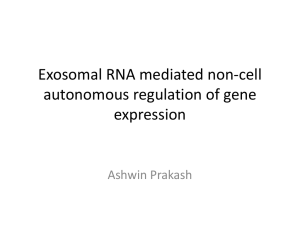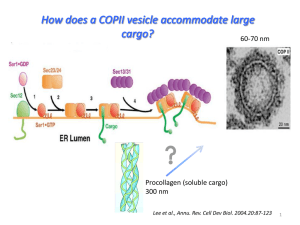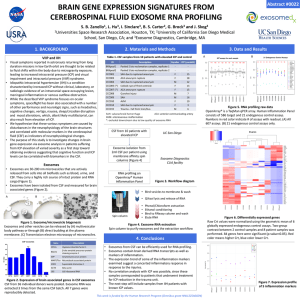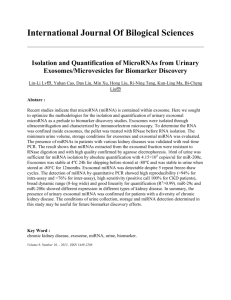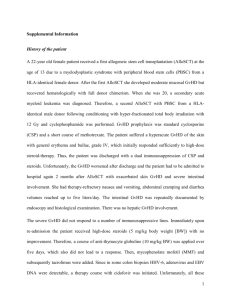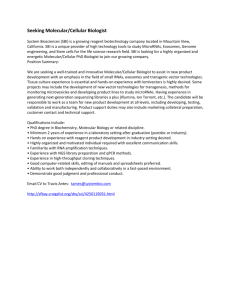Supplementary Figure Legends (doc 68K)
advertisement
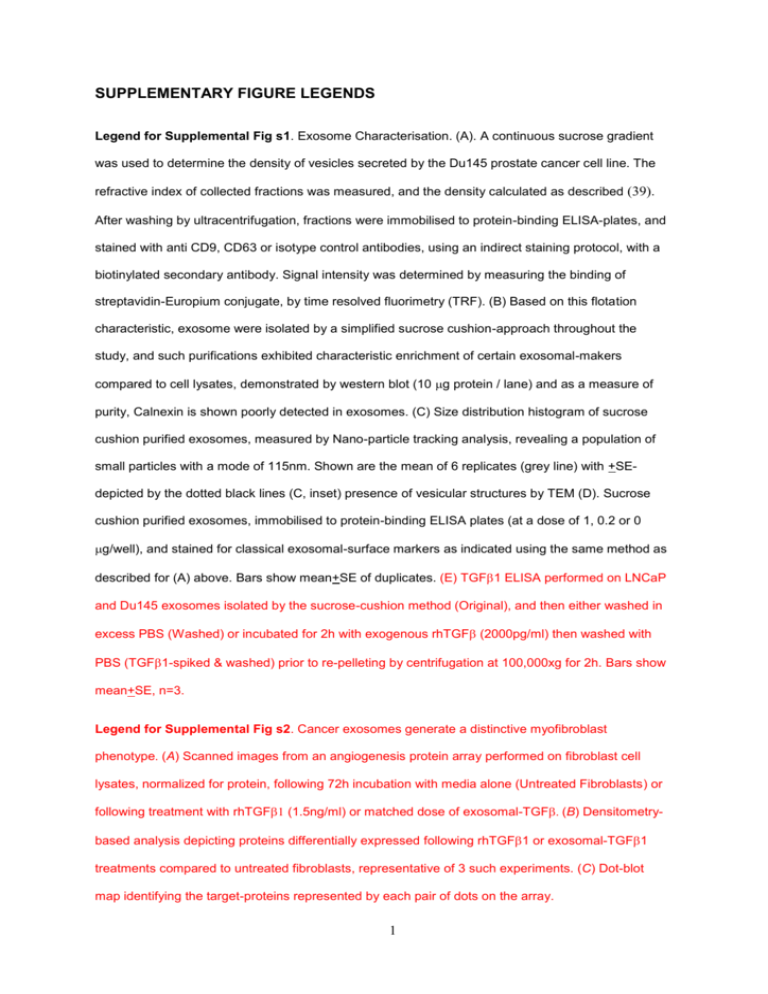
SUPPLEMENTARY FIGURE LEGENDS Legend for Supplemental Fig s1. Exosome Characterisation. (A). A continuous sucrose gradient was used to determine the density of vesicles secreted by the Du145 prostate cancer cell line. The refractive index of collected fractions was measured, and the density calculated as described (39). After washing by ultracentrifugation, fractions were immobilised to protein-binding ELISA-plates, and stained with anti CD9, CD63 or isotype control antibodies, using an indirect staining protocol, with a biotinylated secondary antibody. Signal intensity was determined by measuring the binding of streptavidin-Europium conjugate, by time resolved fluorimetry (TRF). (B) Based on this flotation characteristic, exosome were isolated by a simplified sucrose cushion-approach throughout the study, and such purifications exhibited characteristic enrichment of certain exosomal-makers compared to cell lysates, demonstrated by western blot (10 g protein / lane) and as a measure of purity, Calnexin is shown poorly detected in exosomes. (C) Size distribution histogram of sucrose cushion purified exosomes, measured by Nano-particle tracking analysis, revealing a population of small particles with a mode of 115nm. Shown are the mean of 6 replicates (grey line) with +SEdepicted by the dotted black lines (C, inset) presence of vesicular structures by TEM (D). Sucrose cushion purified exosomes, immobilised to protein-binding ELISA plates (at a dose of 1, 0.2 or 0 g/well), and stained for classical exosomal-surface markers as indicated using the same method as described for (A) above. Bars show mean+SE of duplicates. (E) TGF1 ELISA performed on LNCaP and Du145 exosomes isolated by the sucrose-cushion method (Original), and then either washed in excess PBS (Washed) or incubated for 2h with exogenous rhTGF (2000pg/ml) then washed with PBS (TGF1-spiked & washed) prior to re-pelleting by centrifugation at 100,000xg for 2h. Bars show mean+SE, n=3. Legend for Supplemental Fig s2. Cancer exosomes generate a distinctive myofibroblast phenotype. (A) Scanned images from an angiogenesis protein array performed on fibroblast cell lysates, normalized for protein, following 72h incubation with media alone (Untreated Fibroblasts) or following treatment with rhTGF (1.5ng/ml) or matched dose of exosomal-TGF(B) Densitometrybased analysis depicting proteins differentially expressed following rhTGF1 or exosomal-TGF1 treatments compared to untreated fibroblasts, representative of 3 such experiments. (C) Dot-blot map identifying the target-proteins represented by each pair of dots on the array. 1 Legend for Supplemental Fig s3. Exosome-induced fibroblast differentiation is TGF-dependent. (A) Fibroblasts were stained for SMA expression following 72h treatment with media alone (untreated) or following exosome treatment either in the presence or absence of TGF-neutralizing antibody (10g/ml) or irrelevant isotype-matched antibody (10g/ml). (B) Fibroblast condition media was collected and secretion of uPA, VEGF, HGF and FGF-2 assessed by ELISA (mean+SE, n=3). Legend for Supplemental Fig s4. Exosome secretion is required for differentiation of proangiogenic stroma. (A) The concentration of nano-particles was determined by nano-particle tracking analysis, on conditioned media (CM) from Du145 cells, before (Control) and following ultracentrifugation at 100,000g 1h (Exo-depleted CM). The exosome-containing pellet was resuspended in the original volume, and analysed again (Exo-pellet Reconstituted) (Mean±SE, n=6). (B) Stromal cells were left untreated or treated with Du145 CM, exosome-depleted CM or reconstituted pellet (in the original volume of fresh medium). At 72h stromal differentiation was assessed examining expression of SMA. HUVEC were then added to parallel wells, for an additional 5 days, at which point formation of vessels was examined by staining for CD31 (scale bar= 100 µm). 2

